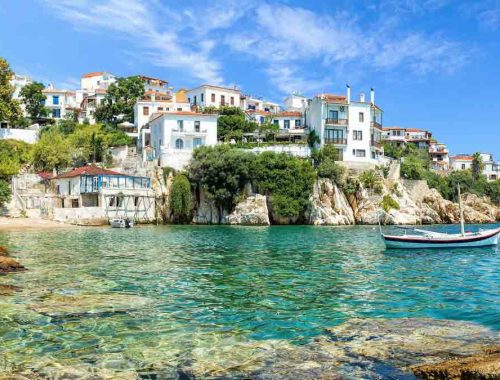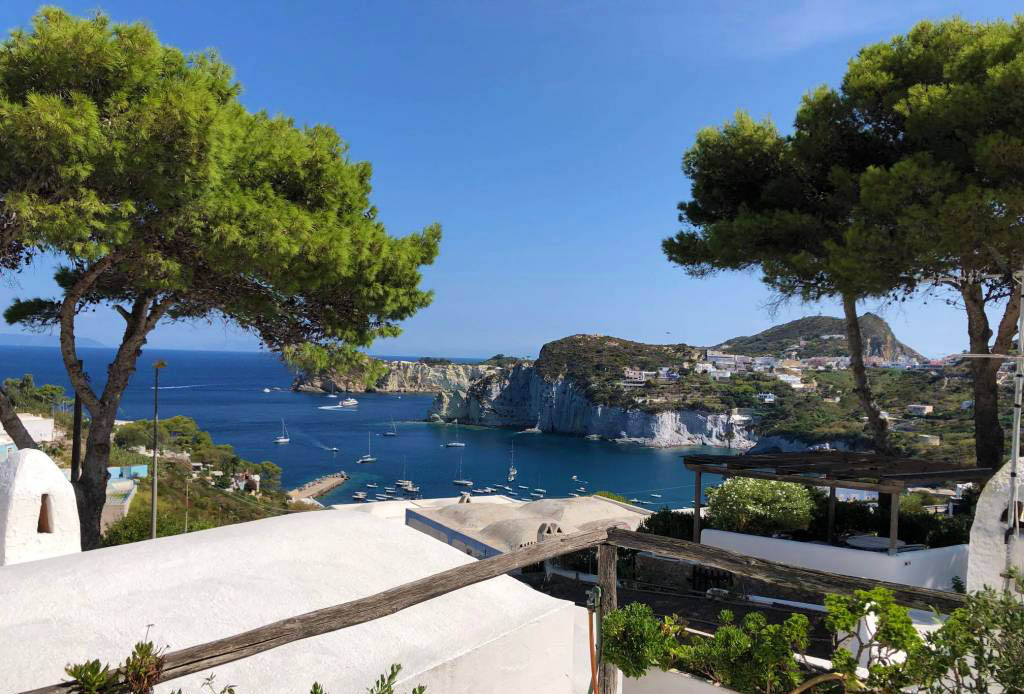
Sailing to the Pontine islands, the garden of the Mediterranean
Located in front of the Lazio coast, the Pontine islands have always been considered as one of the most beautiful islands in the Mediterranean. For those who explore them on board of a sailing boat Palmarola, Ponza and Ventotene, but also Zannone and Santo Stefano, offer the opportunity to spend a week immersed in nature and relaxation and to discover beautiful beaches, secluded coves, crystal clear water, underwater caves, villages perched on the sea and countless traces of an ancient history. The proximity of the islands to each other makes this itinerary of about 120 miles a sailing holiday recommended for everyone, experts and beginners.
Day 1, Nettuno (boarding)
Our itinerary starts from the base Nettuno which is about 30 miles from the archipelago and less than an hour from the international airport of Fiumicino (Rm), Leonardo da Vinci, which also allows those coming from afar to easily reach the boarding point. Usually the check in is at 5 pm and the advice is to spend the first night in the port in order not to miss a nice visit to this characteristic medieval village, enjoy its relaxing atmosphere and indulge in an excellent dinner.

Day 2, Nettuno-Palmarola, 30 miles
At dawn we leave and our first destination is Palmarola. To get there there are about 30 miles to cross durign a navigation of about 3.5 hours. Palmarola, in fact, is the westernmost of the Pontine islands and the one you meet first coming, like us, from the North. For the mooring we head towards Cala del Porto, a bend south of San Silverio, with two options: to go along the passage between I Piatti and the west coast of the island or, more cautiously, bypassing Le Galere to the west and approaching vertically the beach. The bay is sheltered from the east winds, but exposed to the western ones. Alternatively we can go to Cala Brigantina, an anchorage framed by a splendid cliff on the north and by the Scoglio Suvace on the east. This bay got its name because it already offered shelter in 1700s to the ancient sailing ships and it protects from moderate winds from the North West, North and North East. The seabed is made up of sand and rocks, which are not a good tenant. But the water is incredibly transparent.
Wild and almost uninhabited island, Palmarola offers unspoiled nature, there are no roads, no water, no electricity and this is also its charm, in addition to the pretty houses carved into the rock, the turquoise water and its magnificent views , especially at sunsets. Faraglione di Mezzogiorno, which is accessed through a cave that can be reached by dinghy, is a small archipelag made of 4 islets and is part of Palmarola. Another cave to visit is that of the Cat which is a source of fresh water, as well as the so-called “Cliff of the Cathedral”, with its rocks reaching towards the sky like Gothic spiers. Also worth a visit are Le Galere, particular rocks spotted with a black glass with ocher streaks that the local primitives used to obtain arrowheads, axes and knives. Despite the harshness of its reliefs, cliffs and rocks, Palmarola is an open-air garden full of Mediterranean vegetation. Those who want to visit this corner of paradise must arrive by boat and this means that it is much less crowded than the other two Pontine islands.
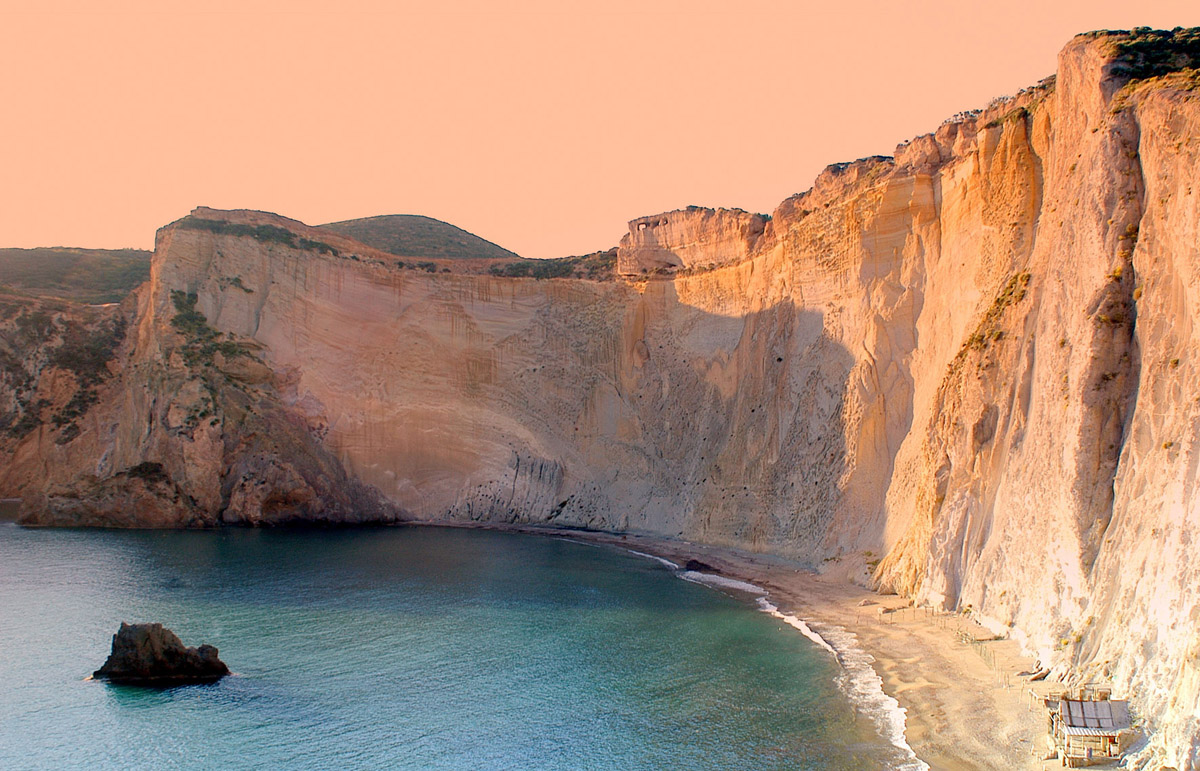
Day 3, Palmarola-Ponza, 3 miles
The following day we leave for Ponza, the largest island of the archipelago, which is just 3 miles away. Leaving Palmarola it is only necessary to pay attention to the Zirri shoal located about 450 m south-east of Punta Vardella and covered by very little water. For the rest, after half an hour of navigation we can moor on the island. The characteristic of Ponza is that it is very indented and there are many shelters between beautiful coves and inlets. We can take advantage of four main anchor spots. The first is in the harbor outside the port, as it is very difficult to find a berth inside, especially in high season. In this case you are exposed to the winds of the first quadrant and it is advisable to always stay alert. With the aforementioned winds it is advisable to anchor in the famous Cala Chiaia di Luna with its impressive sheer white cliff and in the shape of a crescent moon. Two other bays, Cala dell’Acqua and Cala Feola, offer good mooring, but are open to the west. In Cala Feola, after anchoring on mixed rock and sand depths of about 10-15 meters, you can enjoy its “natural pools” which are called “fontone”.
All mentioned before can be the starting points for visiting the countless corners of the coast on foot or by dinghy. Among the most beautifl ones are the Caves of Pilate, where legend has it that the ancient Romans raised moray eels or the Blue Caves and the Emerald Caves. On the north side, the beaches of Cala Gaetano and Cala Felce are woth your time. The latter is right on the tip of the island and is famous for the fern plants that color the yellow hues of the sulphurous rock. On the east coast, on the other hand, Cala Cantina and Cala d’Inferno stand out with its dark rocks. Very curious is also Bagno Vecchio, a pebble beach where convicts were once confined to the work by Bourbon prisons and where there is also a Roman necropolis overlooking the sea. Those who want to see Ponza from above can instead climb to the highest peak of the island, Monte Guardia, where after a walk at an altitude of 280 meters an extraordinary panorama opens up. For an aperitif you can choose the Frontone beach, where there is an outdoor disco, while for dinner you can go out in the harbor area full of small shops open until late at night and which is populated with nightlife until at dawn.
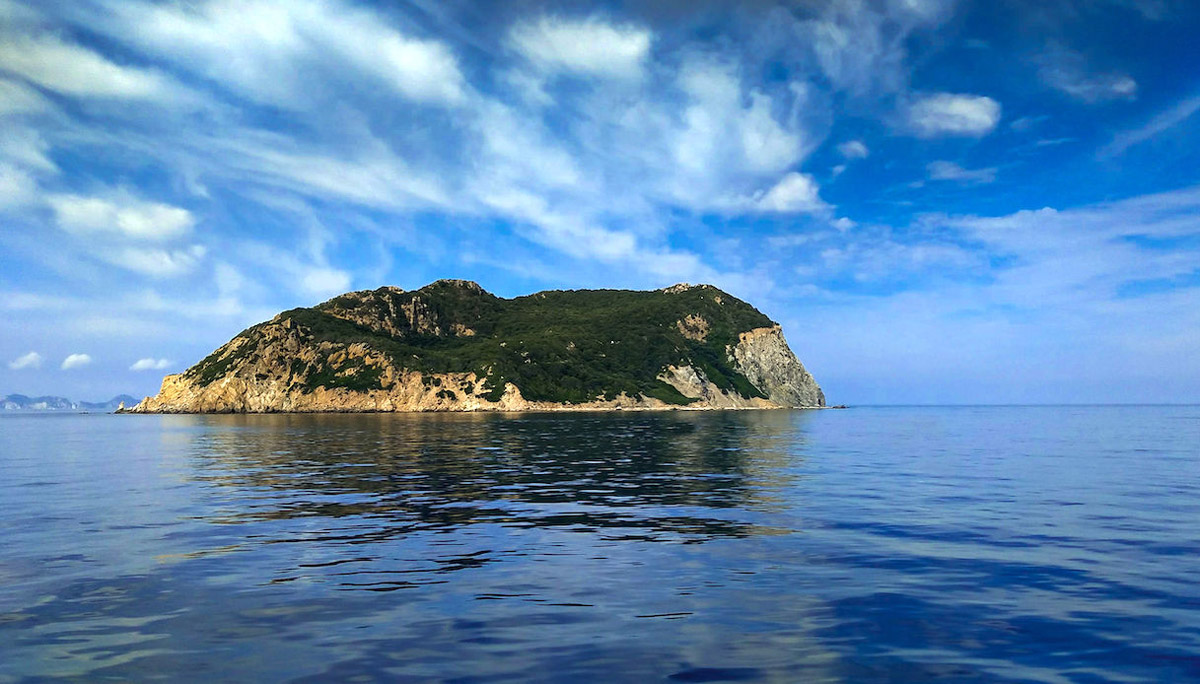
Day 4, Ponza-Zannone, 6 miles
For the third day of our cruise, a full immersion in nature awaits us. We are talking about the island of Zannone, the northernmost of the Pontine archipelago which is about 6 miles north-east from Ponza. In just over 100 hectares, Zannone represents an unspoiled paradise, unique in the Mediterranean, that has been part of the Park Nazionale del Circeo since 1979. It is a nature reserve and to visit it you need to request permission from the Forestry Guard who protects it. To get there you have two options: you can leave Ponza with our boat and after an hour of navigation, moor in the only port of the island represented by the “Secca del Varo” or take advantage of one of the many transfers that depart from the port of Ponza and reach Zannone after a 45-minute ride.
Once you arrive you will be overwhelmed by the beauty of this out of this world place with its nature, water colors and the signs of a distant history. Unlike the other islands of the archipelago, Zannone is regular, compact and rich in luxuriant vegetation. Just walk along its countless paths to inebriate yourself with the scents of rosemary, myrtle, lavender, mastic and broom or cross its holm oak forest enjoying the sea breeze and it will feel like you’re in another dimension. From Varo starts a path created by the Benedictine-Cistercian monks that allows you to reach the remains of the Convent of Santo Spirito where the friars settled in the thirteenth century to protect themselves from the continuous raids of pirates. From the convent you can then continue towards Monte Pellegrino at an altitude of 194 meters and enjoy a breathtaking view that alternates millenary volcanic rocks and lush vegetation, overhanging cliffs where peregrine falcons and herring gulls nest. The Capo Negro lighthouse in the northern part of the island is also worth a visit. The marine environment, offers crystal clear waters where you can meet octopuses, groupers, colorful moray eels and large crabs, while for diving enthusiasts the remains of the “Corriere di Ponza”, a motor sailboat torpedoed by a German submarine during the Second World War, are all to be discovered.
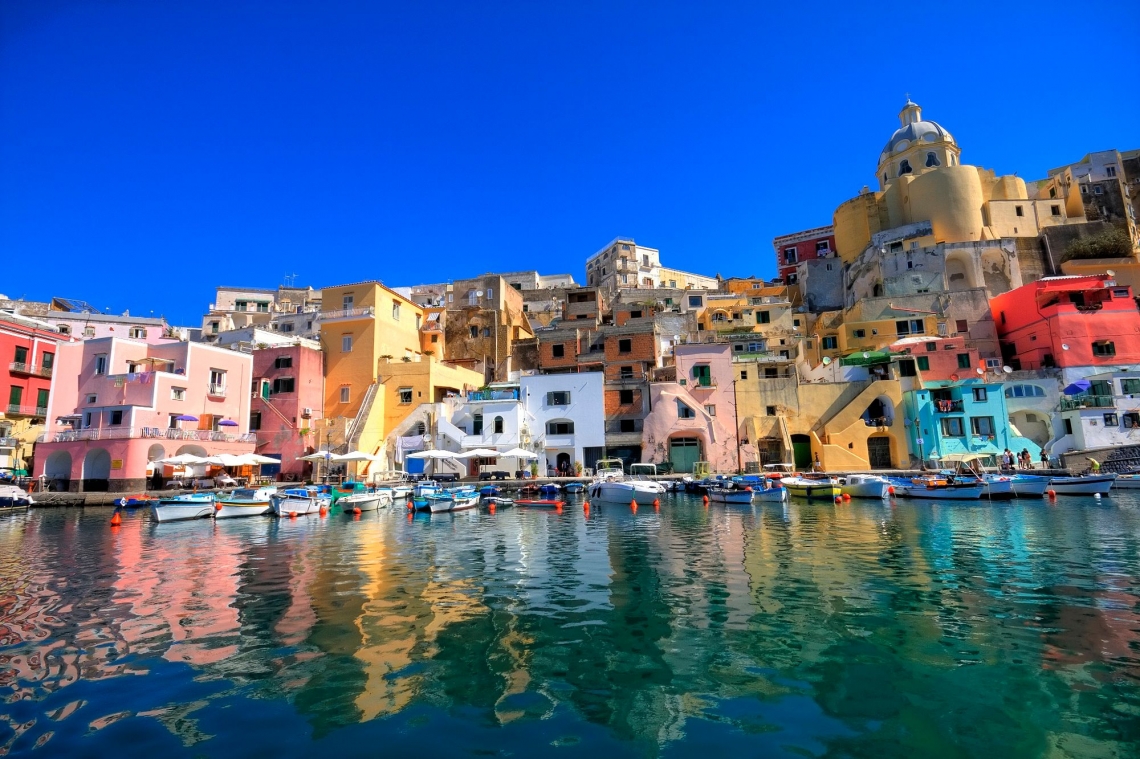
Day 5, Zannone-Ventotene, 25 miles
For the fourth day we set the sails towards Ventotene for a nice sail of at least 3 hours to cross the 25 miles of distance. As for the mooring, there would be the Roman Port of Ventotene, a small basin dug into the tuff and protected by Punta del Pertuso that extends southwards forming a natural pier, but due to a rocky shoal at the entrance the boats with a draft greater than 1.6 m can’t access it. So more practical is the New Port, further to the north, protected by a quay breakwater. It offers about forty berths. If, on the other hand, you want to stay in the harbor there is Cala Nave with its dark and soft sand which is also the most popular beach or Parata Grande which, even though is called “Grande”, is very small in size, but amazes with its spectacular cliffs overlooking the sea surrounding the inlet.
With its 1.5 square kilometers, Ventotene is the second largest island in the Pontine archipelago and has a more relaxed atmosphere than Ponza, where time seems to have stopped. In reality, the island is rich in history and evidence of the strong link with Ancient Rome, a period in which it achived its heyday. Starting from the remains of an imperial villa called “villa Giulia”, named after the first Roman noblewoman later exiled; there is also the Fort, with its tanks which were dug into the rock in Roman times for fish farming as well as the museum dedicated to the remains of five galleys found in 2009 on the seabed with intact loads of wine and olive oil. In addition to the aforementioned Parata Grande and Cala Nave, the beaches to visit are Cala Battaglia with its black sand and the Cala Rossano inlet which can be reached with a short walk starting from the church.
For the evening, you can take a tour of the town which, with its pastel-colored houses that frame the ancient Roman port, looks like a nativity scene overlooking the sea. This town is Ventotene in small – the port and in its beautiful town square full of life, a few tourists, old fishermen and a relaxed and magical atmosphere.
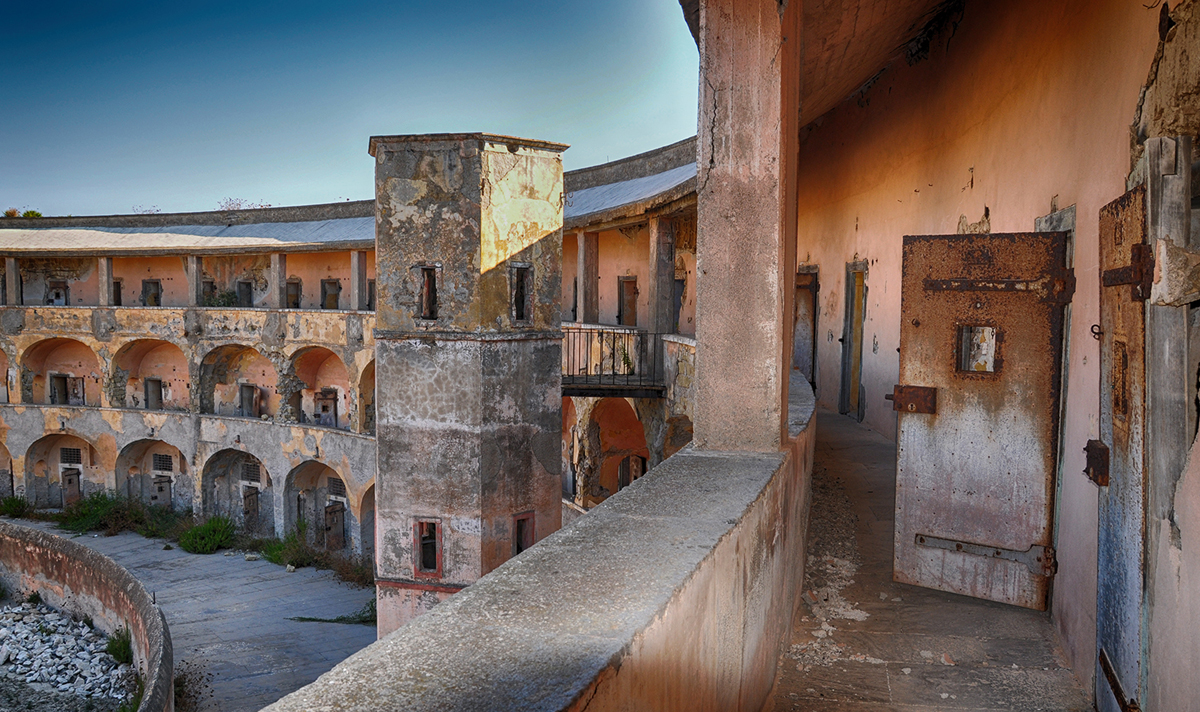
Day 6, Ventotene-Santo Stefano, 1 mile
During our stop in Ventotene, after having toured the island and enjoyed its slow rhythms and its crystal clear waters, we can take advantage of a day to visit a place out of the ordinary and fascinating in some sinister ways. This is the island of Santo Stefano which is located about a mile east of Ventotene. To reach it we can take advantage of the transfers that depart daily from the new port. Like the rest of the archipelago, Santo Stefano has volcanic origin and a circular shape of 500 meters in diameter, with an extension of about 27 hectares. Its steep cliffs have always made mooring difficult ans is only possible in four pleaces, to be chosen according to the winds. At the moment the island is uninhabited and the only building on the island is the famous prison, a circular building with 99 cells, built in the Bourbon period (about 1794-95) by Ferdinand IV and in use until 1965. Among the most famous inmates who were locked up in the penitentiary, between the mid-nineteenth and early twentieth centuries, there are the writer Luigi Settembrini, the brigand Carmine Crocco, the anarchists Gaetano Bresci and Giuseppe Mariani and the President of the Republic Sandro Pertini . Several films were also shot inside the penitentiary, including L’urlo by Tinto Brass, Ostia by Sergio Citti and Sul mare by Alessandro D’Alatri. A place to see to think and remember the history of our country.
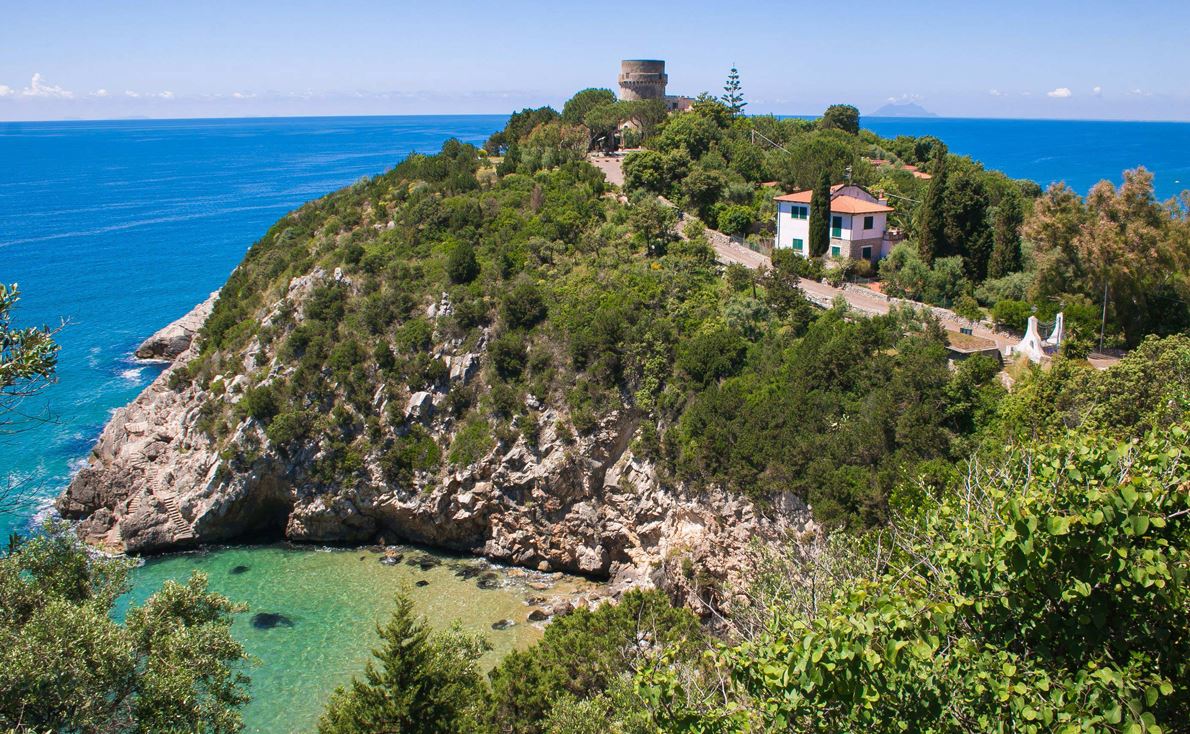
Day 7, Santo Stefano-San Felice Circeo-Nettuno, 52 miles
It is time to leave the wonderful archipelago of the Pontine islands and return to our home base in the port of Nettuno. Turning the bow towards the north, about fifty miles await us to break with an intermediate stop after about 25 miles on the splendid promontory of San Felice Circeo, one of the most evocative of the Lazio coast. You can put yourself at anchor in front of the beach of Torre Paola which juts out onto the sea from the famous Natural Reserve of Monte Circeo in a setting of enchanting beauty that overlooks the endless dunes of Sabaudia, the elegant lake of Paola and the countless glimpses of cliffs, sea caves and turquoise waters that reserve this corner of the Mediterranean.
Back on board, all that remains is to sail for the last 27 miles to be completed in about 3 hours and reach the port of Nettuno again where we will spend the last night before disembarking from this cruise filled by enjoyment in nature, wonderful places and endless emotions.
You May Also Like
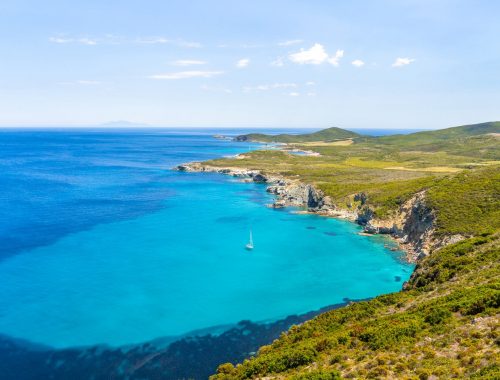
Capraia, Corsica, and Elba: The best of the Mediterranean just miles apart
23/10/2025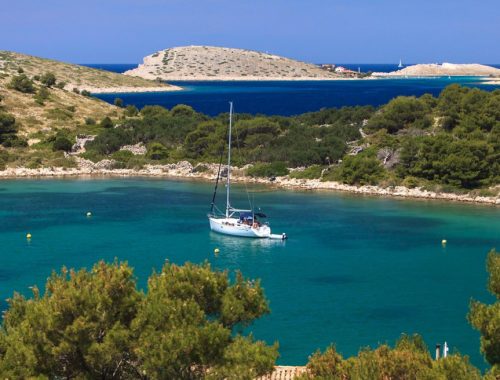
A magical itinerary through the natural delights of Southern Croatia
13/11/2025